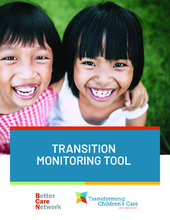The purpose of the tool is to assist technical support practitioners to closely track and monitor the progress of residential care services transitions they are involved in. It can be used as a workplan to guide the implementation of a transition strategy, allowing practitioners to identify relevant transition activities, set progress-related goals, and monitor progress against those goals. It links directly to the Phases of Transition Interactive Diagram, an interagency tool that provides an evidence-based framework for transitions. The suggested activities and key milestones outlined in the Phases of Transition Interactive Diagram have been integrated into the Transition Monitoring Tool to establish a baseline for good practice.
The Transition Monitoring Tool guides users in selecting transition activities that align with their specific strategy and context. It encourages them to collaborate with key stakeholders to set time-bound goals that define expected progress across the three phases of transition. By tracking progress against an industry-standard baseline that can be tailored to individual transitions and reflects the goals agreed upon by stakeholders, the tool can help ensure good practice transition while maintaining stakeholder engagement throughout the entire process.
The tool’s scoring mechanism provides practitioners with visibility of the overarching progress and status of transition, helping them identify where there are issues that may be undermining progress. This supports practitioners to adapt their strategy as often as necessary to ensure transition progresses safely and effectively for the children and young people at the center of the process.

